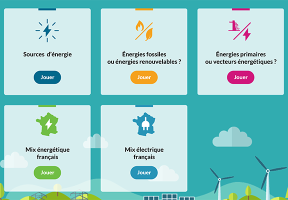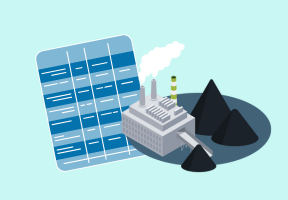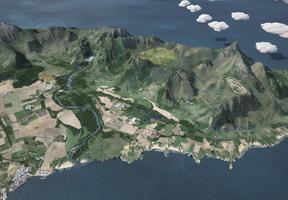
12. The revival of coal in Germany
By depriving Germany of Russian gas, the war in Ukraine indirectly revived coal production in the country, which had in fact been maintained to mitigate the phase-out of . Among other things, German plants use , a material somewhere between peat and coal. Lignite is produced in open-pit mines that spread over hundreds of hectares, sometimes leading to the demolition of villages, such as the Garzweiler mine in Western Germany. Environmental activists gathered near the giant excavators, with a wind farm in the background.
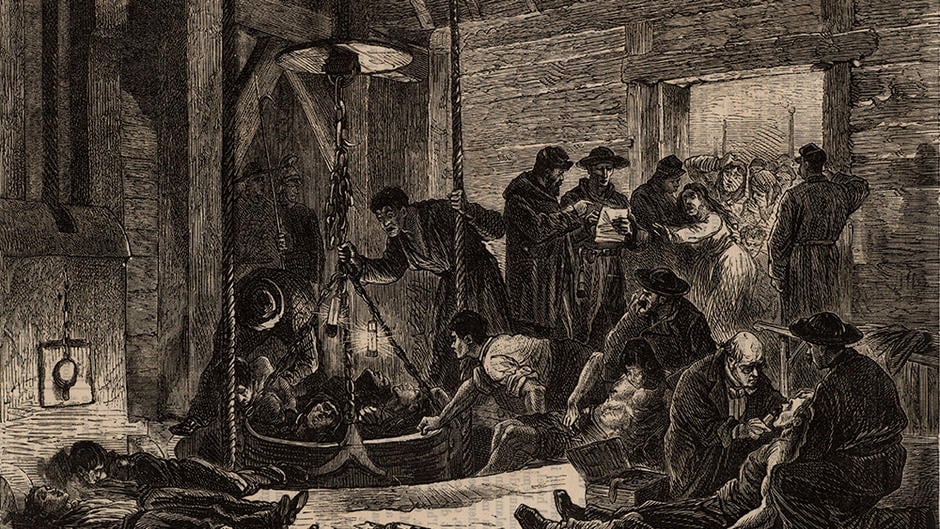
1. A very long history
Starting at the end of the 17th century in Europe, mining provided the basis for the 19th-century Industrial Revolution. It deeply marked countries' social history and its attendant firedamp explosions were tragic, recurring features in the lives of miners and their families. The Jabin mine (shown here) in France's Loire basin was the site of two successive disasters: in 1871 (70 fatalities) and in 1876 (186 fatalities). Underground mining accidents still claim hundreds of casualties each year.

2. Leading fuel for power generation
Coal remains a widely-used resource, particularly to generate in huge thermal plants. Its combustion produces steam, which is used to rotate turbines. With a share of nearly 40%, it is the largest source of electricity generation worldwide ahead of gas. Coal is the second greatest source of in the world (30%), behind oil, and the leading for power generation (40%). While some countries like France and the United Kingdom have closed their last mines, others continue to produce and use coal, including China, the United States, India, Australia, Poland and Germany. The photo shows the Yangzhou plant (in the Chinese province of Jiangsu), with its four cooling towers and steam plumes.
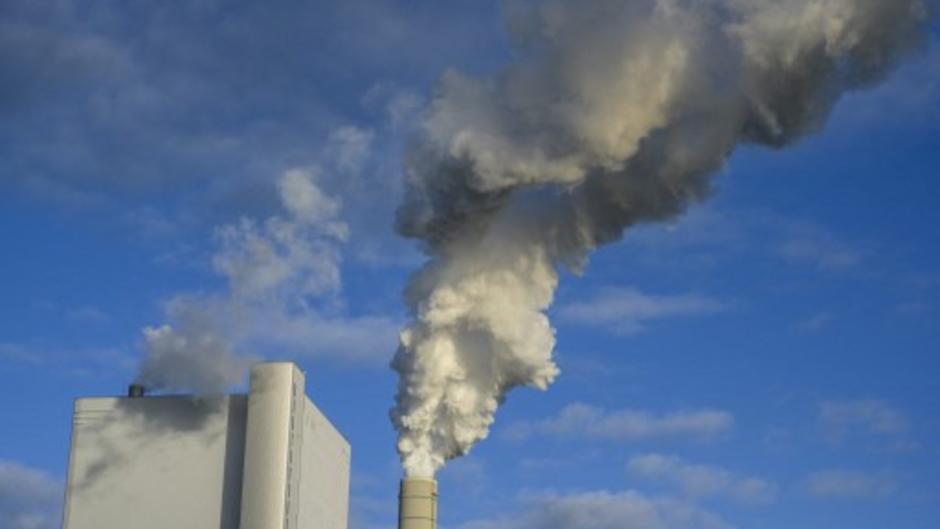
3. Coal, a major source of CO2 emissions
Coal has a very high carbon content and is crushed and burned at 1,200°C. It then combines with oxygen and emits CO2, one of the main greenhouse gases responsible for . In late 2021, coal-fired power generation was the primary source of carbon emissions worldwide according to the International Energy Agency. A coal plant emits twice as much CO2 as a gas plant. The picture shows the chimney of the Onyx Power coal plant in Rotterdam (the Netherlands).

4. Coal, source of air pollution
Thermal power plants and the use of coal in the industry, particularly in places where plants are in disrepair, cause air pollution due to fine particles, which are a real health hazard. In addition to the issue of CO2, the need to improve air quality is driving the Chinese authorities to modernize their plants and to find alternative energy sources.

5. Major environmental impacts
Coal extraction, from either underground or open-pit mines, necessarily has an in mining regions. Open-pit mining is very common nowadays as it is less costly and the working conditions are, in theory, less risky. However, open-pit mining is less acceptable from an environmental standpoint because it disfigures the landscape and often causes dust pollution. The photo shows the Hunter Valley mine, in New South Wales, Australia

6. Open-pit mining
Open-pit mines are organized in terraces, rather like a sports stadium. Once the earth above the first has been removed, coal extraction can begin. After the seam has been depleted, miners dig down to the next layer. The photo shows the Morwell mine in Victoria State, Australia, where the fourth layer is being mined.

7. Impressive machinery
Huge excavators extract the coal. Some of them are over 200 meters long and higher than a thirty-story building. The buckets on the excavators can hold up to 300 metric tons of rock.

8. The room-and-pillar method
Coal is very often mined underground. Vertical shafts are dug to reach the deposits. In each coal seam a series of large pillars are placed at regular intervals to support the mine roof. The shafts connect to a grid of huge galleries (10- to 20-square-meter sections) that can extend over dozens of kilometers.

9. The longwall method
Another technique involves using a machine called a that looks like a huge plow. The shearer slowly pushes and cuts through the coalface. It recovers the loosened ore as it advances and lets the roof collapse behind it. This is called caving. However the technique can weaken the subsurface and produce surface disruptions.

10. China, the world's leading producer and consumer
China consumes as much coal as all other countries combined. Even though it is a leader in development, China continues to add to the number of coal plants – admittedly with more modern and effective units – to meet its substantial energy requirements to sustain its strong growth. China also relies on imports and its main ports (here the port of Lianyungang in Jiangsu province) welcome ships from Australia and Russia. India and South Africa are also large consumers of coal.

11. Decline in American coal production
The United States is the world's second largest coal producer, ahead of India and Australia. But while American coal represented nearly 50% of the energy consumed to produce electricity in 2007, its share had fallen to 20% by 2022. This is attributable to the emergence of production, which boosted the share of gas in American electricity generation from 20% to 36%. Renewable energies (hydraulic, wind, solar) have progressed a great deal (24%). In the photo, a mine in Wyoming.

12. The revival of coal in Germany
By depriving Germany of Russian gas, the war in Ukraine indirectly revived coal production in the country, which had in fact been maintained to mitigate the phase-out of . Among other things, German plants use , a material somewhere between peat and coal. Lignite is produced in open-pit mines that spread over hundreds of hectares, sometimes leading to the demolition of villages, such as the Garzweiler mine in Western Germany. Environmental activists gathered near the giant excavators, with a wind farm in the background.

1. A very long history
Starting at the end of the 17th century in Europe, mining provided the basis for the 19th-century Industrial Revolution. It deeply marked countries' social history and its attendant firedamp explosions were tragic, recurring features in the lives of miners and their families. The Jabin mine (shown here) in France's Loire basin was the site of two successive disasters: in 1871 (70 fatalities) and in 1876 (186 fatalities). Underground mining accidents still claim hundreds of casualties each year.

2. Leading fuel for power generation
Coal remains a widely-used resource, particularly to generate in huge thermal plants. Its combustion produces steam, which is used to rotate turbines. With a share of nearly 40%, it is the largest source of electricity generation worldwide ahead of gas. Coal is the second greatest source of in the world (30%), behind oil, and the leading for power generation (40%). While some countries like France and the United Kingdom have closed their last mines, others continue to produce and use coal, including China, the United States, India, Australia, Poland and Germany. The photo shows the Yangzhou plant (in the Chinese province of Jiangsu), with its four cooling towers and steam plumes.

3. Coal, a major source of CO2 emissions
Coal has a very high carbon content and is crushed and burned at 1,200°C. It then combines with oxygen and emits CO2, one of the main greenhouse gases responsible for . In late 2021, coal-fired power generation was the primary source of carbon emissions worldwide according to the International Energy Agency. A coal plant emits twice as much CO2 as a gas plant. The picture shows the chimney of the Onyx Power coal plant in Rotterdam (the Netherlands).

4. Coal, source of air pollution
Thermal power plants and the use of coal in the industry, particularly in places where plants are in disrepair, cause air pollution due to fine particles, which are a real health hazard. In addition to the issue of CO2, the need to improve air quality is driving the Chinese authorities to modernize their plants and to find alternative energy sources.

5. Major environmental impacts
Coal extraction, from either underground or open-pit mines, necessarily has an in mining regions. Open-pit mining is very common nowadays as it is less costly and the working conditions are, in theory, less risky. However, open-pit mining is less acceptable from an environmental standpoint because it disfigures the landscape and often causes dust pollution. The photo shows the Hunter Valley mine, in New South Wales, Australia

6. Open-pit mining
Open-pit mines are organized in terraces, rather like a sports stadium. Once the earth above the first has been removed, coal extraction can begin. After the seam has been depleted, miners dig down to the next layer. The photo shows the Morwell mine in Victoria State, Australia, where the fourth layer is being mined.

7. Impressive machinery
Huge excavators extract the coal. Some of them are over 200 meters long and higher than a thirty-story building. The buckets on the excavators can hold up to 300 metric tons of rock.

8. The room-and-pillar method
Coal is very often mined underground. Vertical shafts are dug to reach the deposits. In each coal seam a series of large pillars are placed at regular intervals to support the mine roof. The shafts connect to a grid of huge galleries (10- to 20-square-meter sections) that can extend over dozens of kilometers.

9. The longwall method
Another technique involves using a machine called a that looks like a huge plow. The shearer slowly pushes and cuts through the coalface. It recovers the loosened ore as it advances and lets the roof collapse behind it. This is called caving. However the technique can weaken the subsurface and produce surface disruptions.

10. China, the world's leading producer and consumer
China consumes as much coal as all other countries combined. Even though it is a leader in development, China continues to add to the number of coal plants – admittedly with more modern and effective units – to meet its substantial energy requirements to sustain its strong growth. China also relies on imports and its main ports (here the port of Lianyungang in Jiangsu province) welcome ships from Australia and Russia. India and South Africa are also large consumers of coal.

11. Decline in American coal production
The United States is the world's second largest coal producer, ahead of India and Australia. But while American coal represented nearly 50% of the energy consumed to produce electricity in 2007, its share had fallen to 20% by 2022. This is attributable to the emergence of production, which boosted the share of gas in American electricity generation from 20% to 36%. Renewable energies (hydraulic, wind, solar) have progressed a great deal (24%). In the photo, a mine in Wyoming.

12. The revival of coal in Germany
By depriving Germany of Russian gas, the war in Ukraine indirectly revived coal production in the country, which had in fact been maintained to mitigate the phase-out of . Among other things, German plants use , a material somewhere between peat and coal. Lignite is produced in open-pit mines that spread over hundreds of hectares, sometimes leading to the demolition of villages, such as the Garzweiler mine in Western Germany. Environmental activists gathered near the giant excavators, with a wind farm in the background.
 This may interest you
This may interest you
See all
